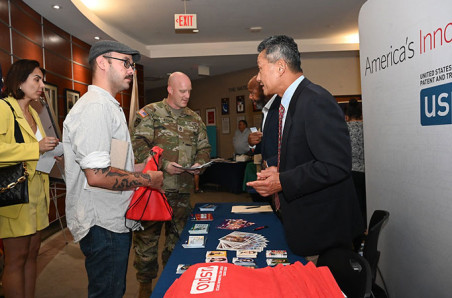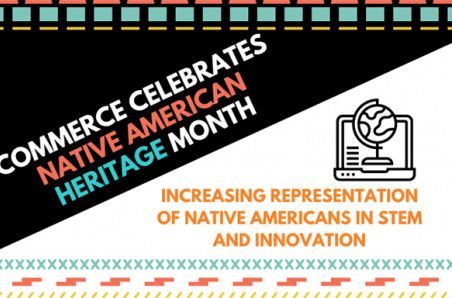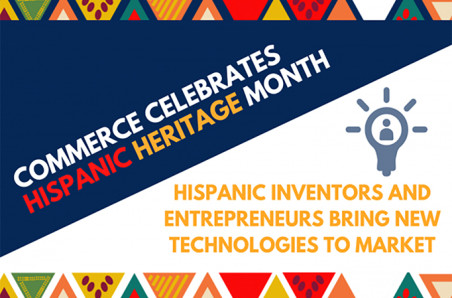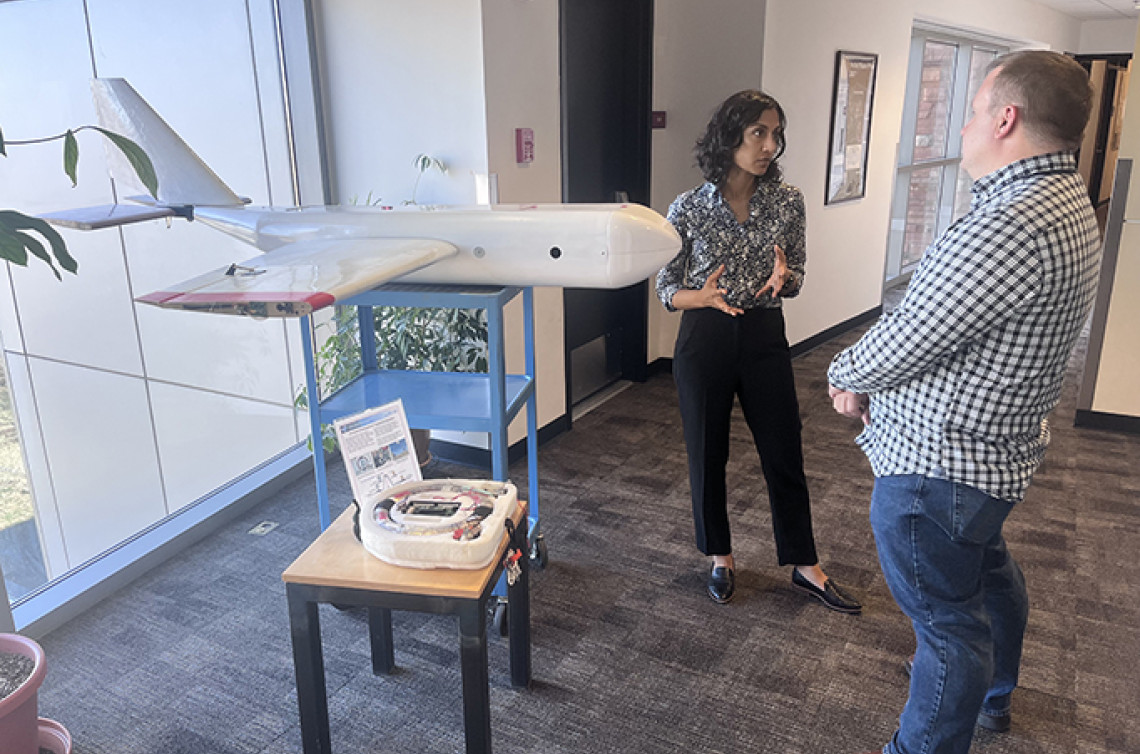
Parikha Mehta and Wayne Mackenzie discussing Dr. Bianca Baier's innovative AirCore atmospheric sampling device and the HORUS glider at the NOAA Global Monitoring Laboratory in April 2023. Credit: NOAA
Patenting innovation in climate science
Parikha Mehta has spent the last four months focused on the intersection of intellectual property and climate and environmental technologies while on an employee exchange (known as a detail) at the National Oceanic and Atmospheric Administration (NOAA) from the USPTO. Her goal: Help researchers understand the importance of protecting their inventions so that NOAA's research and technology can better serve the public and inspire future innovation.
The work overlaps with her usual job as a senior patent examination policy advisor at USPTO. “In my USPTO role, I focus on advising all types of stakeholders on our patent policy– soup to nuts of the whole patent process,” she says.
At NOAA, Mehta visited labs and fisheries science centers and interviewed researchers about their knowledge of the patent process and technology transfer.
We sat down to ask her about her experience, and intellectual property issues.
How did you hear about the employee exchange opportunity with NOAA? What motivated you to apply?
I heard about this opportunity through the USPTO detail announcement program; our agency is really supportive of career development through short-term reassignment opportunities. My background is in science and engineering, and I was excited for the chance to spend some time a little closer to that. I was also eager to share my knowledge of patent law and policy to hopefully help people who are trying to solve problems I care about personally. Before I started this detail, I knew broadly that NOAA was engaged in important research in a lot of different areas, but I didn't appreciate the full scope of the agency's impact until I got here. I've so enjoyed talking to the talented scientists and engineers here; meeting people and learning about their work has been incredibly rewarding, and also just a lot of fun.
Why is it important for researchers to patent inventions?
I've been inspired by how passionate NOAA researchers are about using science and engineering to help the public and the planet. Patents are a great vehicle for that, because they create a pathway for transforming innovation in the lab into something that the public can access and benefit from in day to day life.
Patents are also a tool for protecting the integrity of the important work that's being done at NOAA. If somebody else tries to claim ownership of an idea, or use it in a way that doesn't meet NOAA's high standards, that can harm the agency and the public. Patents can provide insurance against those things. For example, I met several NOAA researchers who are working on innovative tools for collecting improved data from the ocean or the atmosphere. If those tools are patented, NOAA can confidently share them for broader public use knowing there is a measure of protection against anyone else distributing sub-standard knockoffs or erasing NOAA's rightful credit for that innovation.
What is holding people back? Why do you think people don't seek out a patent?
I think it's mostly a matter of awareness. Scientists, engineers, and managers are often unfamiliar with how patents work, how they relate to federal research, and how to apply for them. The next two USPTO detailees will use what I've found to help NOAA's research workforce learn about these topics, and hopefully help them feel more comfortable and confident when initiating discussions about how to protect NOAA inventions.
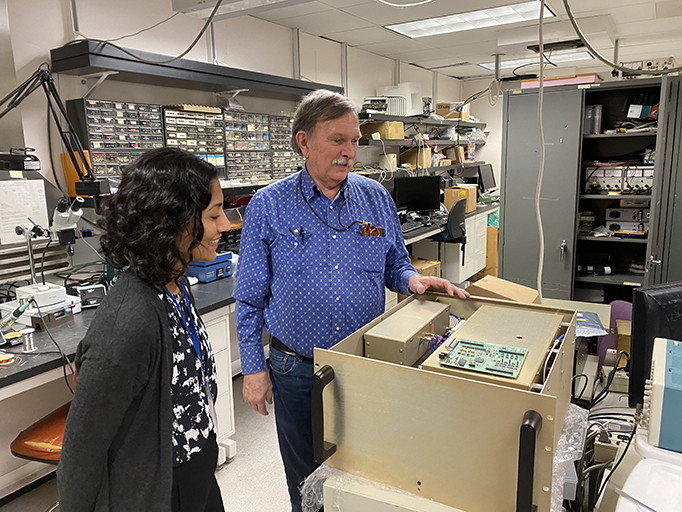
Dr. Paul Johnston showing Parikha an engineering work-in-progress in his lab at NOAA's Physical Sciences Lab in April 2023. Credit: NOAA
What do you say to someone who is hesitant about patenting?
Researchers sometimes feel that their inventions aren't suitable for filing a patent application because they are too niche, too specific to a particular problem they are trying to solve in their lab. They assume that nobody else is going to want or be able to use their invention, so they talk themselves out of trying to pursue a patent for it. To that, I would say don't sell yourself short; no invention is too small. The NOAA Technology Partnerships Office has talented people who can guide that part of the decision making process; all you have to do is let them know you invented something, and they'll help figure out the best path forward from there.
What has been the biggest surprise to you about NOAA and the culture here?
I don't know if I would characterize this as surprising, but everyone's strong mission identity and commitment to public service here has definitely made an impression on me. People show up to work here because they genuinely want to do good and help others; this really shone through in my interactions with every person I met at NOAA, not just the researchers. . It's been wonderful, and probably one of the things I will remember most about this experience.
Mehta is the first of three USPTO employees assigned to NOAA this year. While Mehta's been working at NOAA, another detailee has also gone from NOAA to USPTO to share climate science with their staff and advise on USPTO green initiatives. In a forthcoming article we will talk to that detailee about their experiences.
Engage with the Director and join the conversation on our social media channels.


